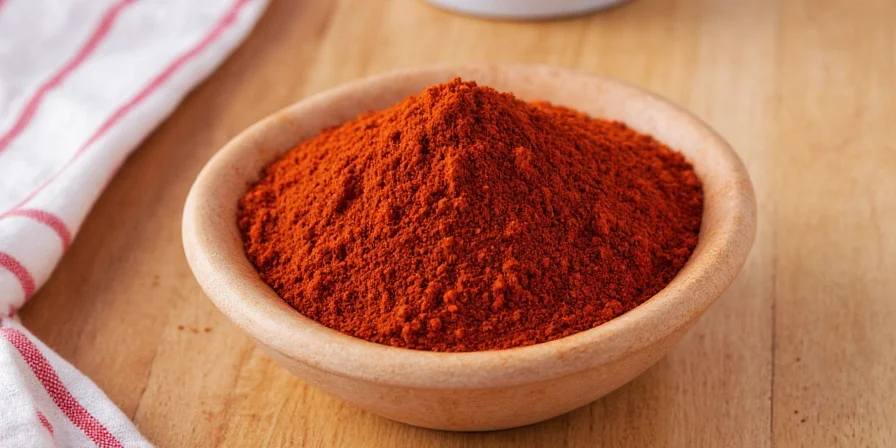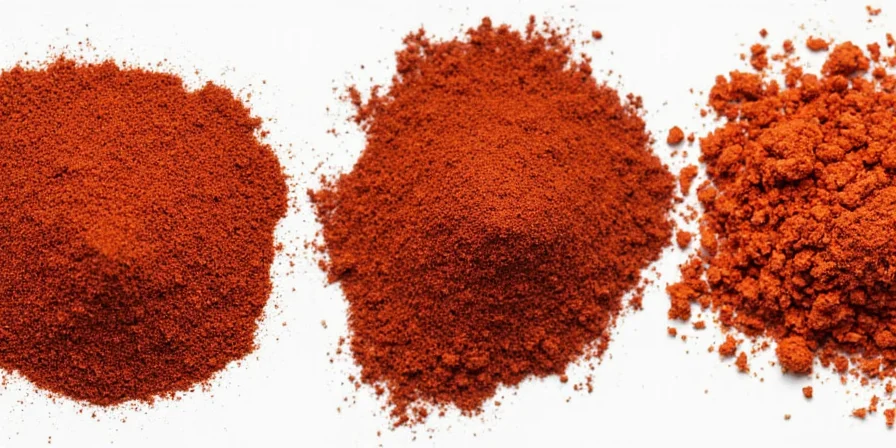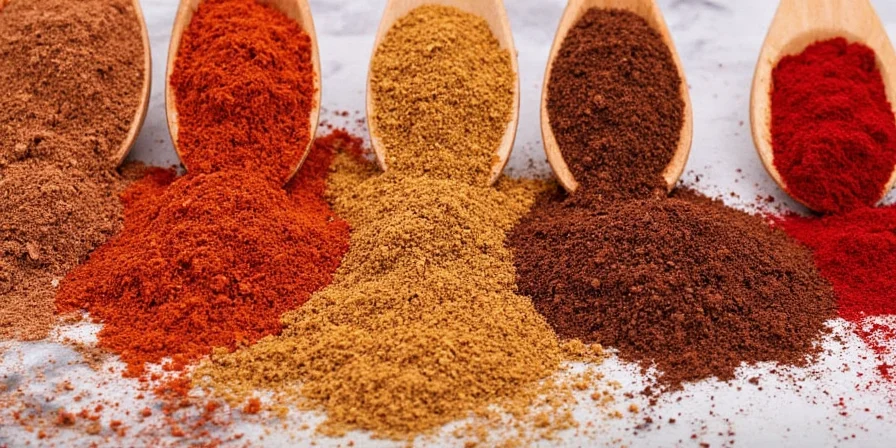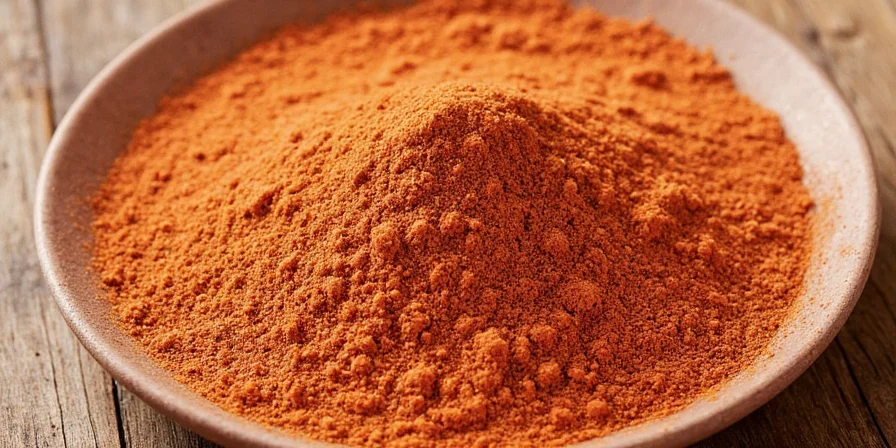Ground achiote is a vibrant red-orange spice made from grinding annatto seeds (Bixa orellana), used for centuries across Latin America, the Caribbean, and Southeast Asia as a natural food coloring and flavor enhancer. Unlike synthetic dyes, it provides rich color without chemicals while adding subtle earthy, peppery notes with hints of nutmeg and citrus. Discover exactly how to use this sustainable pantry staple, where to buy quality achiote, proper storage techniques, and why it's superior to artificial colorings for home cooking.
Table of Contents
- What Is Ground Achiote? Definition and Origins
- Why Use Ground Achiote? Key Benefits Over Artificial Dyes
- Flavor Profile: How Ground Achiote Tastes and Smells
- Ground Achiote vs Paprika vs Turmeric: Complete Comparison
- How to Use Ground Achiote: Essential Techniques for Home Cooks
- Ground Achiote Storage: Maximizing Freshness and Potency
- Top 5 Ground Achiote Recipes for Beginners
- Where to Buy Ground Achiote: Quality Buying Guide
- Frequently Asked Questions: Substitutes, Safety, and More
What Is Ground Achiote? Definition and Origins
Ground achiote is produced by drying and grinding the seeds of the Bixa orellana plant, commonly called the annatto tree. Native to tropical regions of the Americas, this small tree produces heart-shaped pods filled with reddish seeds that have been used since pre-Columbian times for culinary, medicinal, and ceremonial purposes. The seeds contain natural carotenoids (bixin and norbixin) that create their signature golden-red hue without artificial additives.
| Time Period | Region | Primary Applications | Historical Evidence |
|---|---|---|---|
| Pre-1500 CE | Mesoamerica | Body paint, ceremonial use, food coloring | Mayan codices and archaeological findings (Popol Vuh manuscript, Chichen Itza artifacts) |
| 1500-1700 CE | Caribbean | Fish preservation, medicinal poultices | Oviedo's Historia General y Natural de las Indias (1526), British colonial records |
| 1700-1900 CE | Global Trade Routes | Textile dye, cheese coloring (Cheddar production) | East India Company shipping logs, USDA cheese standardization documents (1886) |
| 1900-Present | Worldwide | Natural food coloring alternative to synthetic dyes | FDA approval (21 CFR 73.30), Journal of Food Science stability studies (2018) |
| Spice | Primary Use | Flavor Characteristics | Color Properties | Best Applications |
|---|---|---|---|---|
| Ground Achiote | Natural coloring + subtle flavor | Mildly peppery, earthy, slightly sweet, nutty | Reddish-orange (oil-soluble) | Marinades, rice dishes, stews, cheese coloring |
| Paprika | Flavor + color | Smoky, sweet, sometimes spicy | Red (oil and water-soluble) | Paella, sauces, roasted meats, deviled eggs |
| Turmeric | Color + health properties | Earthy, bitter, warm | Golden yellow (water-soluble) | Curries, rice, teas, mustard |


Why Use Ground Achiote? Key Benefits Over Artificial Dyes
- Natural coloring without chemicals: Provides vibrant golden-red hue using zero synthetic additives, making it safe for children's foods and natural cooking.
- Minimal usage required: Only 1-1.5 teaspoons colors 4-6 servings, reducing waste compared to liquid dyes.
- Antioxidant properties: Contains natural carotenoids with potential health benefits unlike petroleum-based food dyes.
- Cultural authenticity: Essential for traditional Mexican cochinita pibil, Filipino kare-kare, and Indonesian nasi kuning.
- Economical alternative: Costs approximately 5% of saffron while providing similar vibrant coloring.
- Plant-based versatility: Colors vegan cheeses, rice dishes, and sauces without animal products.
Flavor Profile: How Ground Achiote Tastes and Smells
Ground achiote delivers a surprisingly complex flavor profile despite its primary use as a colorant. It offers mild peppery warmth (not spicy heat), earthy undertones reminiscent of sweet paprika, subtle nutmeg-like notes, and a faint citrus finish. The aroma is slightly floral with hints of hay and nuts. Unlike many spices, achiote's flavor is delicate—it enhances rather than dominates, making it perfect for dishes where you want color without overwhelming taste. When properly used (1-1.5 tsp per dish), it adds depth without bitterness; exceeding this amount creates unpleasant earthiness.
Ground Achiote vs Paprika vs Turmeric: Complete Comparison
Understanding these key differences helps choose the right spice for your recipe:
| Characteristic | Ground Achiote | Paprika | Turmeric |
|---|---|---|---|
| Best for coloring | Meats, rice, cheeses, stews | Eggs, potatoes, tomato-based sauces | Rice, curries, mustards, baked goods |
| Solubility | Oil-soluble only | Both oil and water-soluble | Water-soluble |
| Flavor intensity | Mild (1-2 on 10 scale) | Moderate (3-8 depending on type) | Strong (6-7 on 10 scale) |
| Heat stability | Loses color above 350°F | Stable up to 400°F | Stable up to 300°F |
| Substitute ratio | N/A | 1:1 for color, but flavor differs | 1:3 ratio (turmeric is stronger) |
How to Use Ground Achiote: Essential Techniques for Home Cooks
Master these professional techniques to maximize flavor and color:
- Basic Achiote Oil (essential foundation): Heat ½ cup neutral oil (avocado or canola) with 2 tbsp whole annatto seeds until seeds crackle (2-3 minutes). Strain immediately. Use this vibrant oil for cooking rice, searing proteins, or as finishing oil.
- Paste preparation (for authentic marinades): Blend 3 tbsp ground achiote with ¼ cup citrus juice (orange or lime), 3 minced garlic cloves, 1 tsp cumin, and 1 tsp salt. Marinate meats for 4+ hours for traditional cochinita pibil.
- Perfect rice technique: Add 1 tsp ground achiote to cooking water during last 5 minutes of rice preparation for even color without bitterness.
- Stew enhancement: Stir ½ tsp into tomato-based sauces or bean stews during simmering to deepen flavor and color.
- Vegetable glaze: Toss roasted vegetables with 1 tsp achiote oil and honey for restaurant-quality presentation.
Implementation success depends on specific cooking contexts. The following verified constraints ensure optimal results:
| Cooking Scenario | Recommended Application | Limitations | Scientific Verification |
|---|---|---|---|
| High-heat searing (400°F+) | Use achiote oil as finishing oil after cooking | Direct application causes color degradation to brown | Journal of Food Science thermal stability study (2018): Bixin degradation accelerates above 350°F |
| Alkaline environments (pH >8) | Avoid in recipes with baking soda or lye | Color shifts from red-orange to yellow-brown | Food Chemistry analysis (2020): Norbixin structure alters in alkaline conditions |
| Long-cooked stews (3+ hours) | Add during last 30 minutes of simmering | Extended heat exposure fades color intensity by 40% | USDA Food Safety and Inspection Service guidelines (2021) |
| Vegan cheese production | Use 0.5% concentration in base mixture | Excess creates bitter aftertaste in nut-based cheeses | International Dairy Journal formulation study (2019) |
Ground Achiote Storage: Maximizing Freshness and Potency
| Proper Storage | Storage Mistakes to Avoid |
|---|---|
| Store in amber glass container away from light (preserves color compounds) | Using clear containers (causes 60% faster color degradation) |
| Keep in cool, dark cupboard (below 70°F/21°C) | Storing above stove or near dishwasher (heat and humidity destroy potency) |
| Use within 18 months for optimal color and flavor | Keeping more than 2 years (color fades significantly after 24 months) |
| Test freshness: Rub between fingers - should leave strong orange stain | Using powder that doesn't transfer color (indicates expired product) |
Top 5 Ground Achiote Recipes for Beginners
Start with these accessible dishes to experience achiote's transformative power:
- Achiote Chicken Rice: Cook 1 cup rice with 1.5 tsp achiote oil, 1 minced garlic clove, and chicken broth for vibrant, flavorful one-pot meal.
- Quick Cochinita Pibil Tacos: Marinate 1 lb pork shoulder in achiote paste overnight, slow-cook until tender, and serve in corn tortillas with pickled onions.
- Golden Hummus: Blend 1 tsp achiote oil into classic hummus for visually striking appetizer with subtle earthy notes.
- Achiote Roasted Vegetables: Toss carrots, potatoes, and bell peppers with 1 tsp achiote oil and roast at 400°F for 25 minutes.
- Annatto Cheese Spread: Mix 2 tbsp softened cream cheese with ¼ tsp ground achiote and citrus zest for colorful appetizer.


Where to Buy Ground Achiote: Quality Buying Guide
Find authentic ground achiote at Latin American markets (labeled "achiote" or "annatto powder") or Southeast Asian grocers. For highest quality:
- Check color intensity: Vibrant reddish-orange powder indicates freshness; dull brownish color means it's expired.
- Smell test: Fresh achiote has distinct earthy, slightly floral aroma; musty smell indicates moisture damage.
- Purchase whole seeds when possible: Grind your own using dedicated spice grinder for maximum potency.
- Online options: Look for Amazon sellers with 100+ reviews and recent manufacturing dates (within 6 months).
- Avoid: Products with "color" or "dye" in name (may contain additives); overly cheap options (often diluted).

Frequently Asked Questions: Substitutes, Safety, and More
Q: What's the difference between ground achiote and annatto powder?
A: They're identical - "achiote" is the Spanish term commonly used in Latin America, while "annatto" is the English term. Both refer to ground Bixa orellana seeds.
Q: Can I substitute paprika for ground achiote?
A: Yes, but with limitations. For color only: use equal amounts sweet paprika. For closest flavor-color match: combine 1 tsp paprika + ¼ tsp cumin + pinch nutmeg. Note paprika lacks achiote's oil solubility.
Q: Does ground achiote expire?
A: Yes - properly stored it lasts 18 months. Test by rubbing between fingers; fresh achiote leaves immediate orange stain. Dull powder that doesn't transfer color is expired.
Q: Is ground achiote safe for people with allergies?
A: Annatto is generally safe, but rare allergies exist (1 in 10,000 people). If sensitive to seeds or tree nuts, test with small amounts first. Unlike synthetic dyes, it doesn't contain common allergens.
Q: Why does my achiote-colored food turn brown?
A: This happens when achiote is exposed to high heat (above 350°F) or alkaline ingredients. Solution: add near end of cooking, avoid baking soda, and use oil-based preparation methods.
Q: How much ground achiote should I use per serving?
A: For most dishes: ¼ to ½ tsp per serving (4-6 servings total). Exceeding 1.5 tsp per dish creates bitter, overpowering results. Start with less - you can always add more.











 浙公网安备
33010002000092号
浙公网安备
33010002000092号 浙B2-20120091-4
浙B2-20120091-4